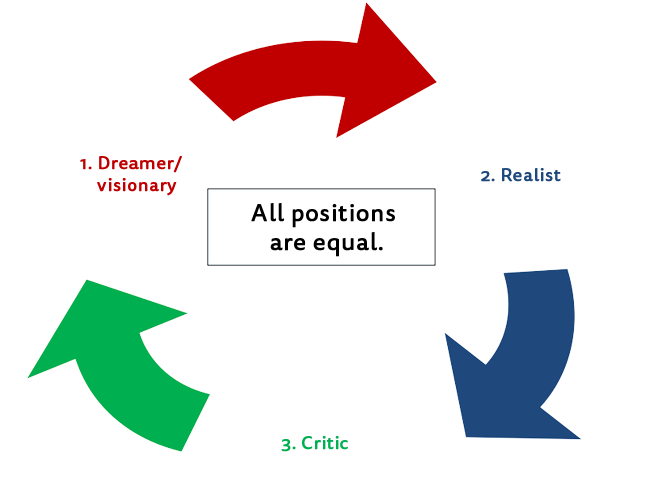The title of this blog article may strike you as a bit curious and perhaps you’re asking yourself: What can we possibly learn from the Americans? Maybe you’re quite critical of the Americans for all kinds of reasons – political ones for starters?
I feel the same way. I know, too, that all that glitters is not gold. And of course I see the many downsides of the US.
However, ever since I went to university in San Diego, California, as an exchange student in 1998, I’ve had a rather romantic view of many things in the US – which tempts me to travel there again and again, despite all the criticism. This year was no exception. I spent two weeks traveling through beautiful Colorado and had so many amazing experiences and impressions.
Once again, I was reminded that despite it all, there is also a lot we can learn from the Americans.
Let me tell you a story.
I was traveling alone in a rental car in the Southwest when one of my tires suddenly started going flat. In the middle of a canyon. My cell phone didn’t have internet coverage because my oh-so-great European cell phone contract hadn’t allowed me to book a Surf & Travel Pass for my time in the US. Of course, there would have been other options, but I chose to use this situation as an opportunity to enjoy being unplugged from the internet for a while. Until then on my travels in the US, I’d never gotten into the kind of trouble that would have required an internet-enabled cell phone.
So, I was in a canyon and my right front tire was leaking air. The nearest town was 23 miles away: Montrose, where I had booked a motel room. I decided to drive as slowly as the tire would allow to get as close to my motel as possible. It didn’t quite work out that way, but at least I was able to get to a Walmart parking lot that was 7 miles from the motel, and where I felt much more comfortable than being all alone in a canyon.
Shortly after I arrived there, the tire was completely flat. I tried to make a call to my car rental company in Denver. Without success. I was stuck.
I went into the Walmart and told a clerk about my dilemma. She called a young associate straight away who immediately whipped out her cell phone to find the number for the local car rental company and handed me her phone so I could talk to them.
It all became pretty complicated. They needed the exact address of the Walmart in Montrose (there is only one Walmart in Montrose and the rental car company is 2.5 miles away). Without that, I wouldn’t be able to file a claim. Okay. We got the address. Next problem: she needed my cell phone number. I gave it to her, but of course only an American number would work, not a German one. Where could I get an American number? After some back and forth, the lady understood the problem and finally accepted my German number. She said that AAA would be there within the next hour, and that I should wait and leave my cell phone on. I did.
Some 45 minutes later, the young Walmart employee found me and told me that the AAA had contacted her (not me!) to tell her that they would not be able to come today and would come tomorrow. Okay. Now what?
There I was. Still no solution, at 9 pm.
Without hesitation, the young Walmart clerk kindly offered to take me to my motel! Fantastic, right?
The next morning, I contacted the rental car company again and explained what had happened. They couldn’t believe it and immediately sent someone to pick me up and take me to my car. No sooner said than done. He changed the tire, replaced it with a spare, took me to a tire repair shop and made sure the damage was fixed. This would take a couple of hours at the most. He then took me back to the motel where I could relax and wait for the call from the garage, so I wouldn’t have to sit in the garage waiting room all that time. When the call came, the motel owner’s gardener came right up to me and said he would be happy to take me to the garage…
I thought it was all so amazing and didn’t know what to make of it all. Does this sound like normal behavior to you? How would it have gone in other countries?
All in all, I’ve tended to only meet polite and courteous Americans. Of course, the standard question, “How are you?” can seem a bit superficial. But don’t you feel more welcome when you walk into a store and are asked how you are in a friendly way? When they help you readily and kindly? It doesn’t bother me if someone means it sincerely or superficially. It makes me feel better and lifts my spirits.
I much prefer that to being grumbled at and feeling like a nuisance when I have a question about a product or service.
No matter where I found myself in Colorado – at a motel, a gas station, a grocery store or in the great outdoors – I found it easy to strike up a conversation, to feel seen and to feel welcomed. Which makes for a great vacation atmosphere.
Of course, I’m aware of the many challenges and problems in the US – from my time in California, too. It’s shocking to see the level of poverty in many parts of the country and the hardships that many Americans face. But it’s definitely not all bad. And when Americans see things in Germany that they wish they could see in the States, I feel the same way in some respects. I wish we could always be friendly and respectful to each other. I think that would be an important first step in the right direction. What do you think?
Go for it,
Your Crisis Manager




 Nadja Jacke
Nadja Jacke 


